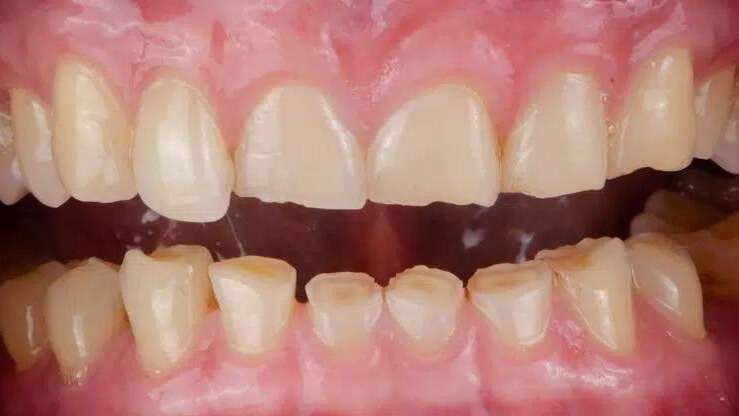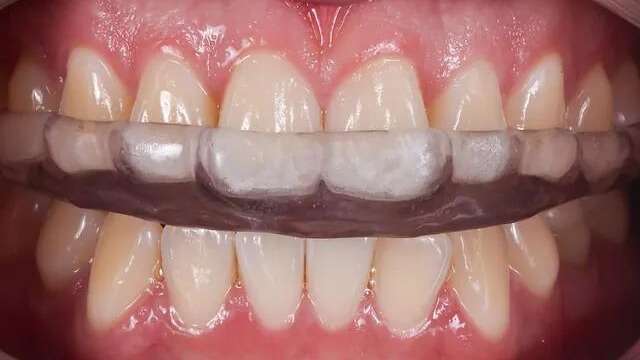Teeth Grinding
Bruxism
Bruxism or tooth grinding, is excessive clenching the upper and lower jaw or grinding the teeth whether asleep or awake. This can lead to facial pain and permanent damage to teeth and jaw joints. It occurs in about 20% of adults while awake and 8% during sleep, with up to 18% in children. It’s most common during the early part of the night’s sleep. The grinding forces during sleep can be much stronger than when awake, sometimes up to six times greater.
Symptoms
- morning headaches and neck stiffness
- jaw muscle pain or tightness
- teeth clenching upon waking
- temporomandibular joint pain and clicking
- chronic facial pain
- ear discomfort or ringing
- increased tooth sensitivity especially in the morning
- teeth wear, chipping or fractures
- fatigue in the jaw muscles when chewing
- rhythmic crunching or grating sounds
Treatment
Stress management, relaxation techniques and jaw exercises and massages can help reduce symptoms of grinding and relax jaw muscles.
A custom molded plastic mouth appliance, known as an occlusal splint or night guard, is made to absorb the force of the destructive grinding or clenching behaviour, preventing additional dental damage such as teeth wear, broken fillings or cracked teeth.

Using the splint
Follow the instructions of your dentist, typically used at night, although some patients may need to wear it during the day if experiencing acute pain. Avoid using it while eating.
Initially, you may experience:
- The splint feeling tight on your teeth, especially the front teeth, upon insertion.
- Increased salivation.
- A sensation that your teeth do not fit together normally when the splint is removed.
These experiences are normal and usually resolve within a short time. Most patients adapt to wearing a splint within about a month.

Caring for your splint
- Daily Care: after use, rinse with cold water (avoid hot water) and store in box given.
- Fit & Adjustment: wear the splint as advised by your dentist. Failure to do so may result in your splint not fitting and requiring a new splint to be made.
- Cleaning: soak in Sterident in cold water for an hour weekly. Staining over the years is normal, but avoid using toothpaste as it can wear away the splint, causing a loose fit.
- Service Life: a splint, designed to protect your teeth, typically lasts 3 to 5 years. It’s preferable to wear out a splint than risk damage to your own teeth

Ongoing use of your splint
After the initial adjustments, your splint will require periodic checks and potential adjustments. Typically, this can be done in your regular check-up appointments. Remember to bring your splint to all dental visits, as any future dental procedures, such as fillings or crowns, may necessitate adjustments to the splint.
Contact Us
Get in touch
Opening Hours
Monday
08.30AM - 5.00PM
Tuesday
08.30AM - 5.00PM
Wednesday
08.30AM - 5.00PM
Thursday
08.30AM - 5.00PM
Friday
08.30AM - 5.00PM
Saturday & Sunday
CLOSED
